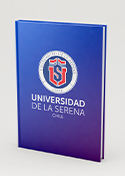Browsing by Author "Chisholm, J"
The Low-redshift Lyman Continuum Survey: Optically Thin and Thick Mg ii Lines as Probes of Lyman Continuum Escape
(ASTROPHYSICAL JOURNAL, 2023-01-01) Xu, XF; Henry, A; Heckman, T; Chisholm, J; [et al.]
The Mg ii lambda lambda 2796, 2803 doublet has been suggested as a useful indirect indicator for the escape of Ly alpha and Lyman continuum (LyC) photons in local star-forming galaxies. However, studies to date have focused on small samples of galaxies with strong Mg ii or strong LyC emission. Here, we present the first study of Mg ii to probe a large dynamic range of galaxy properties, using newly obtained high-signal-to-noise, moderate-resolution spectra of Mg ii, for a sample of 34 galaxies selected from the Low-redshift Lyman Continuum Survey. We show that the galaxies in our sample have Mg ii profiles ranging from strong emission to P-Cygni profiles to pure absorption. We find that there is a significant trend (with a possibility of spurious correlations of similar to 2%) that galaxies that are detected as strong LyC emitters (LCEs) show larger equivalent widths of Mg ii emission, while non-LCEs tend to show evidence of more scattering and absorption features in Mg ii. We then find that Mg ii strongly correlates with Ly alpha in both equivalent width and escape fraction, regardless of whether emission or absorption dominates the Mg ii profiles. Furthermore, we show that, for galaxies that are categorized as Mg ii emitters, one can use the information of Mg ii, metallicity, and dust to estimate the escape fraction of LyC within a factor of similar to 3. These findings confirm that Mg ii lines can be used as a tool for selecting galaxies as LCEs and thus serve as an indirect indicator for the escape of Ly alpha and LyC.
The VANDELS survey: the ionizing properties of star-forming galaxies at 3=z=5 using deep rest-frame ultraviolet spectroscopy
(MONTHLY NOTICES OF THE ROYAL ASTRONOMICAL SOCIETY, 2023-05-11) Saldana-Lopez, A; Schaerer, D; Chisholm, J; Calabrò, A; [et al.]
The physical properties of Epoch of Reionization (EoR) galaxies are still poorly constrained by observations. To better understand the ionizing properties of galaxies in the EoR, we investigate deep, rest-frame ultraviolet (UV) spectra of similar or equal to 500 star-forming galaxies at 3 = z & = 5 selected from the public ESO-VANDELS spectroscopic survey. The absolute ionizing photon escape fraction ($f_{\rm esc}<^>{\rm abs}$, i.e. the ratio of leaking against produced ionizing photons) is derived by combining absorption line measurements with estimates of the UV attenuation. The ionizing production efficiency (?(ion), i.e. the number of ionizing photons produced per non-ionizing UV luminosity) is calculated by fitting the far-UV (FUV) stellar continuum of the VANDELS galaxies. We find that the $f_{\rm esc}<^>{\rm abs}$ and ?(ion) parameters increase towards low-mass, blue UV-continuum slopes and strong Ly a emitting galaxies, and both are slightly higher-than-average for the UV-faintest galaxies in the sample. Potential Lyman Continuum Emitters (LCEs, $f_{\rm esc}<^>{\rm abs} \ge 5{{\ \rm \, per\ cent}}$) and selected Lyman Alpha Emitters (LAEs, W-Lya <= -20 angstrom) show systematically higher ?(ion) (log ?(ion)(Hz erg(-1)) approximate to 25.38, 25.41) than non-LCEs and non-LAEs (log ?(ion)(Hz erg(-1)) approximate to 25.18, 25.14) at similar UV magnitudes. This indicates very young underlying stellar populations (approximate to 10 Myr) at relatively low metallicities (approximate to 0.2 Z(circle dot)). The FUV non-ionizing spectra of potential LCEs is characterized by blue UV slopes (<=-2), enhanced Ly a emission (<=-25 angstrom), strong UV nebular lines (e.g. high ${\rm C\, \small {IV}}$1550/${\rm C\, \small {III}}$1908 >= 0.75 ratios), and weak absorption lines (<= 1 angstrom). The latter suggests the existence of low gas-column-density channels in the interstellar medium, which enables the escape of ionizing photons. By comparing our VANDELS results against other surveys in the literature, our findings imply that the ionizing budget in the EoR was likely dominated by UV-faint, low-mass, and dustless galaxies.
